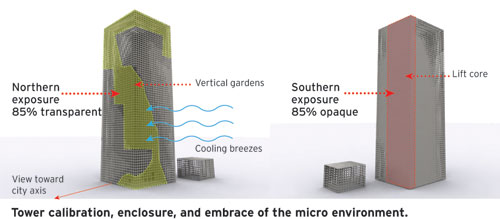Model Behavior: Anticipating Great Design
With the use of Ansys CFX, another commercial platform with fluid dynamic codes, Buro Happold is mapping wind patterns to address issues of potential facade damage, as well as pedestrian comfort. Wind shadows-areas of turbulent, but slower wind-abound in denser landscapes. Their absence on such an open site allows winds to maintain greater velocities, reaching their highest speeds at the building's corners. Design of these surfaces is developing to respond to wind speed concerns. "We were generating data early enough in the design process to influence the makeup of the facade," says Herman. "While the original facade design consisted entirely of glass, detailing of the surface has changed, and new materials that wouldn't be affected by the scratching of sand are being considered."
The landscape design around the building, including a number of sunken courtyards, or wells, is also evolving in response to CFD analysis. The wells-which serve as a metaphor for the region by representing water reserves around which buildings would traditionally sprout-were partly responsible for generating the initial CFD study; the small wind shadows they create would likely cause particulate matter to fall out of the airstream and settle there due to the drop in wind speed. According to Herman, "The concern was that sand would simply pour into those depressions."
While advances in CFD analysis in recent years have led to very reliable modeling, wind-tunnel testing is typically still employed, partly because it is better able to measure turbulence. But because wind tunnels use scale models, studies of tiny particles such as sand can be inaccurate.
Sun protection factor
|
|
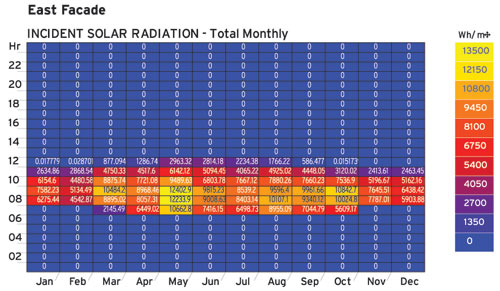 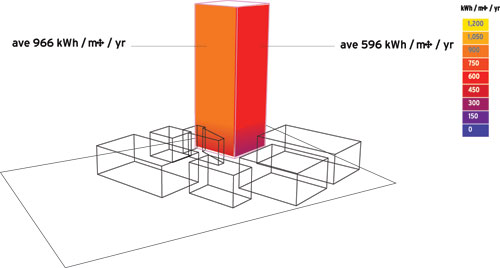 |
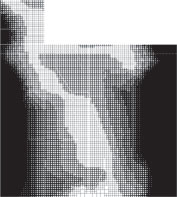 Insolation analysis of
the tower's south facade using the building design and environmental analysis tool Ecotect (above). Tower transparency is seen along unfolded elevations (left). Insolation analysis of
the tower's south facade using the building design and environmental analysis tool Ecotect (above). Tower transparency is seen along unfolded elevations (left).
 Images courtesy Perkins + Will |
Â
With the Al-Birr Foundation Headquarters in Riyadh, Saudi Arabia, Perkins + Will preferred to do the model-making, both physical and virtual, themselves. Using the building and environmental-analysis program Ecotect, the architects developed an innovative building enclosure for the office tower. By so doing, they were able to integrate sustainability from the start, allowing the building's aesthetics to emerge in the process.
Like much of the Middle East, Riyadh has a hot, dry climate. The capital is also an old city with few very tall buildings. Perkins + Will's design for a 28-story structure incorporates both environmental concerns, given the severe heat-average summer temperatures approach 110 degrees Fahrenheit-and historical references-towers symbolize protection, security, and shelter. They also looked to traditional Arabic architectural elements, namely the mashrabiya screen, a window of carved wood latticework that provides privacy and protection from the unforgiving sun.
Taking all these things into consideration, Perkins + Will developed a perforated enclosure of lightweight, precast concrete that acts as a sunscreen. With the help of Ecotect's insolation analysis-which measures solar radiation energy received on a given surface area in a given time-the architects were able to precisely calibrate elevations in response to changing sun angles, leaving a significant level of opacity on the southern elevation where there is the highest heat gain. The northern elevations are predominately transparent, allowing unobstructed views back to the city from the vertical terrace gardens and spiraling glass volume on the interior of the building. "Ecotect allowed us to bring analysis into the design process early on," says Perkins + Will design principal Robert Goodwin, AIA. "That is a huge benefit of the program." Situated on a corner along King Fahad Road, the city's main axis, the building will be illuminated internally at night so that the arrangement of variously sized apertures result in a dazzling pattern of light; an inversion of the solar-regulating function of the tower enclosure during the day.





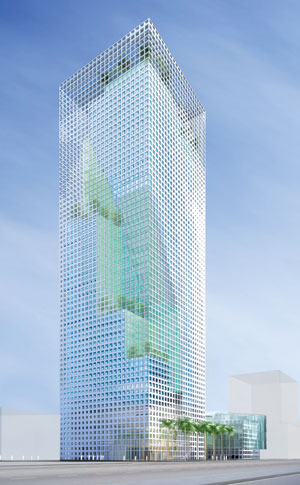 Viewed from King Fahad Road, the main axis in Riyadh, Saudi Arabia, the protective enclosure of the Al-Birr Foundation Headquarters tower reveals the spiraling glass volume in the interior carved out by a terracing vertical garden (left). The orientation of the various facades determined the calibration of the enclosure, which controls solar and heat gain and operates as a light shelf diffusing system (below).
Viewed from King Fahad Road, the main axis in Riyadh, Saudi Arabia, the protective enclosure of the Al-Birr Foundation Headquarters tower reveals the spiraling glass volume in the interior carved out by a terracing vertical garden (left). The orientation of the various facades determined the calibration of the enclosure, which controls solar and heat gain and operates as a light shelf diffusing system (below).